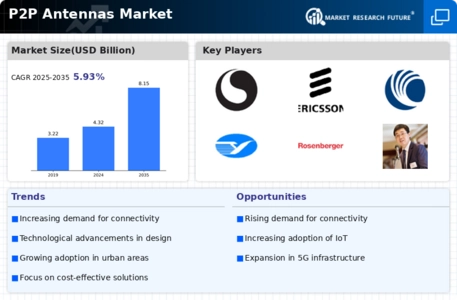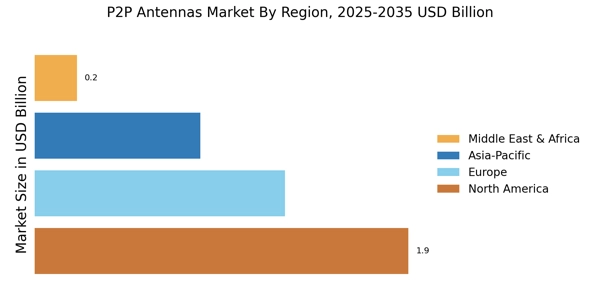P2P Antennas Market Summary
As per MRFR analysis, the P2P Antennas Market Size was estimated at 4.32 USD Billion in 2024. The P2P Antennas industry is projected to grow from 4.576 USD Billion in 2025 to 8.143 USD Billion by 2035, exhibiting a compound annual growth rate (CAGR) of 5.93 during the forecast period 2025 - 2035.
Key Market Trends & Highlights
The P2P Antennas Market is experiencing robust growth driven by technological advancements and increasing connectivity demands.
- North America remains the largest market for P2P antennas, driven by extensive wireless communication infrastructure.
- Asia-Pacific is emerging as the fastest-growing region, fueled by rapid urbanization and smart city initiatives.
- Parabolic antennas dominate the market due to their wide-ranging applications, while flat-panel antennas are witnessing the fastest growth.
- The rising demand for high-speed connectivity and the expansion of wireless communication networks are key drivers propelling market growth.
Market Size & Forecast
| 2024 Market Size | 4.32 (USD Billion) |
| 2035 Market Size | 8.143 (USD Billion) |
| CAGR (2025 - 2035) | 5.93% |
Major Players
Ubiquiti Networks (US), MikroTik (LV), TP-Link (CN), Cambium Networks (US), Netgear (US), D-Link (TW), Siklu Communication (IL), Radwin (IL), EnGenius Technologies (US)

















Leave a Comment